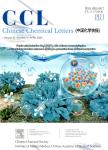New advances in small molecule hole-transporting materials for perovskite solar cells
New advances in small molecule hole-transporting materials for perovskite solar cells作者机构:Jiangsu Key Laboratory for Carbon-Based Functional Materials & Devices Institute of Functional Nano & Soft Materials (FUNSOM) Soochow University
出 版 物:《Chinese Chemical Letters》 (中国化学快报(英文版))
年 卷 期:2016年第27卷第8期
页 面:1293-1303,1469页
核心收录:
学科分类:08[工学] 080502[工学-材料学] 0805[工学-材料科学与工程(可授工学、理学学位)]
基 金:the financial support from the National Natural Science Foundation of China(Nos.21572152 and 61575136) funded by Collaborative Innovation Center (CIC) of Suzhou Nano Science and Technology by the Priority Academic Program Development of the Jiangsu Higher Education Institutions (PAPD)
主 题:Perovskite solar cell Photovoltaic device Small molecule Conjugated structure Hole-transporting material
摘 要:Organic π-functional molecules are the foundation and basic component of organic optoelectronic *** example,for ideal carrier transporting materials,extended π-conjugation and ordered π-πstacking are necessary to enhance the charge mobility and achieve desirable *** a promising way to convert sunlight into electricity,organometal halide perovskite solar cells(PSCs) have captured a lot of attention due to its predominant merits especially in the aspect of remarkable photovoltaic performance and much potentially low production *** conventional planar PSC structure,hole-transporting layer which typically consists of organic π-functional materials plays a key role in suppressing holeelectron pair recombination,promoting charge transporting and ensuring ohmic contact of back *** the key roles of HTMs and its soaring progress in recent years,here,we will summarize recent progress in small organic π-functional materials from its diverse functions in ***,aiming to further promote the development of organic π-functional molecules and HTMs,a promising direction toward highly efficient HTMs will also be discussed.



